An Age Contrived, at first glance, feels like an opportunity combining an interesting theme with stunning components, but dig deeper, and what is really there? Having seen others describe an age of Contrived as complex, clunky but worth sitting through, has me intrigued.
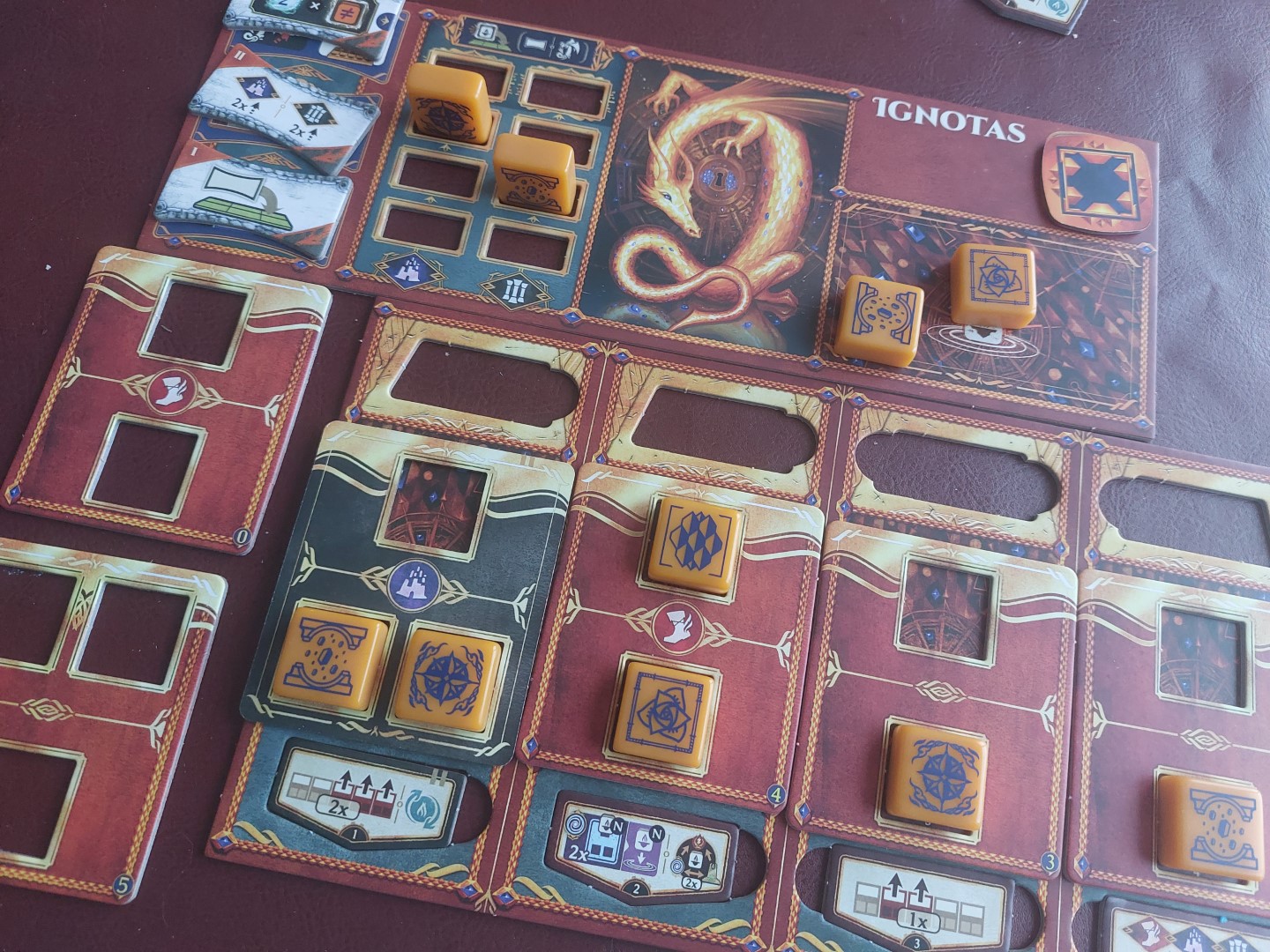
In reality, An Age Contrived isn’t that complicated despite its somewhat very average and in need of improvement of a rulebook. On your turn, you’ll either advance or take action(s), advancing is almost resetting your player board as you slide transmutation tiles in and out of your player board. Some of these tiles come with symbols, which will strengthen your actions. And what really makes this complex, is the application of this theme into its rules and actions. I suspect if you stripped away the theme and rewrote the actions and redesigned some of the iconography this would be much easier to grasp and teach.
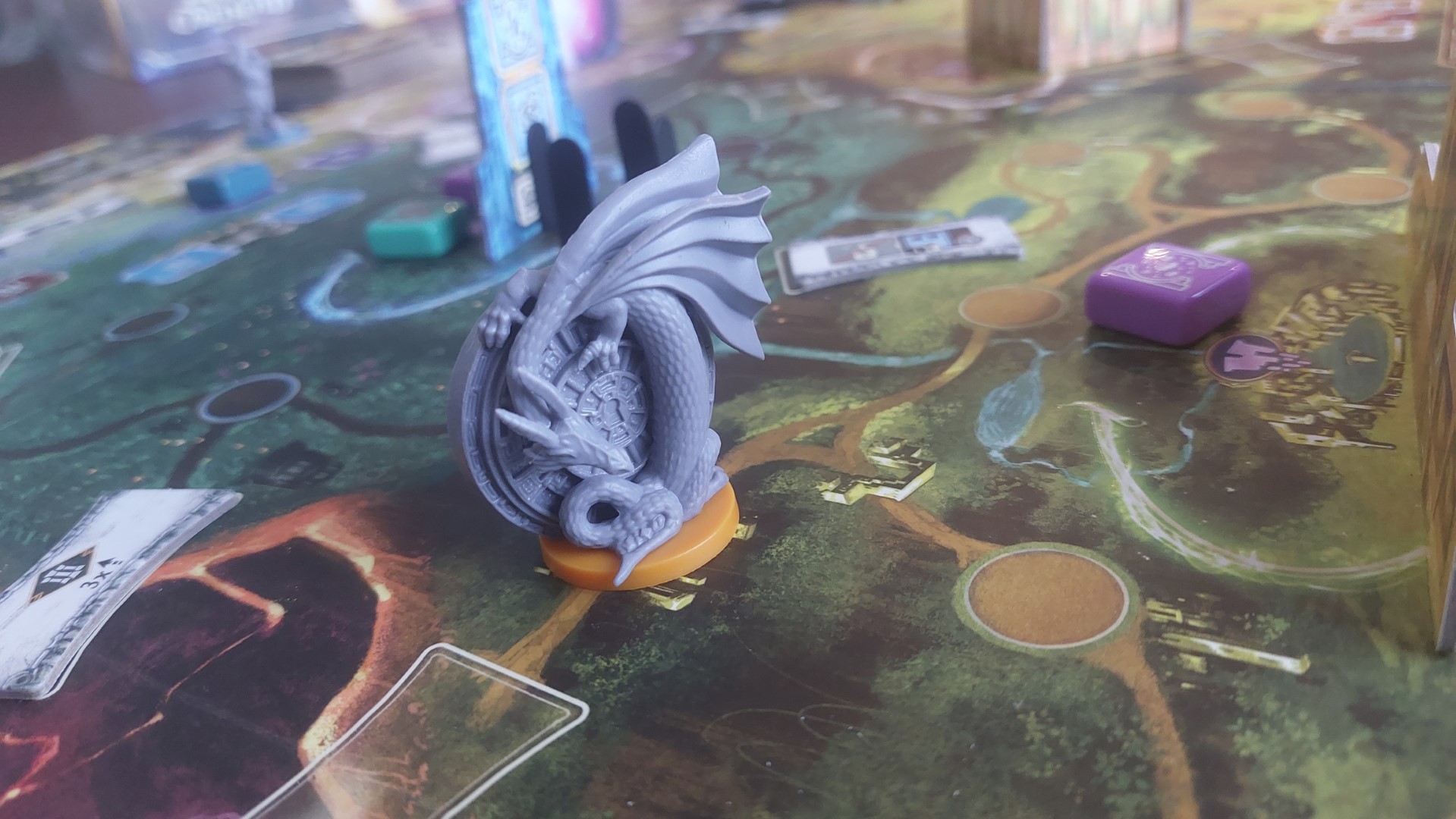
Actions are relatively straightforward, and you’ll spend energy to take actions, which are:
Deploy
Recharge
Move
Reposition
Claim

Deploy will see you moving energy from your player board onto the main board to either the monuments, achievements, or tile pool.
Recharging is simply flipping your charge token, which will allow you to take a stronger advance turn in the future.
Move is moving your character on the map or advancing on the monument or pillar track. You’ll need to combine moving your character and progression on the relevant tracks, to give you the opportunity at the right time to bind energy. Binding energy is moving energy from your individual track to a monument or pillar. As you move, you’ll also cross bridges, gaining instant bonuses.
Reposition, kinda does what it says on the tin, you can reposition energy on the board between the tile pool, monuments, and achievements.
Whilst Claim is how you upgrade your transmutation tiles, giving you symbols for achievements and develop abilities and have more spaces for energy. Its essentially about becoming more efficient in the future.
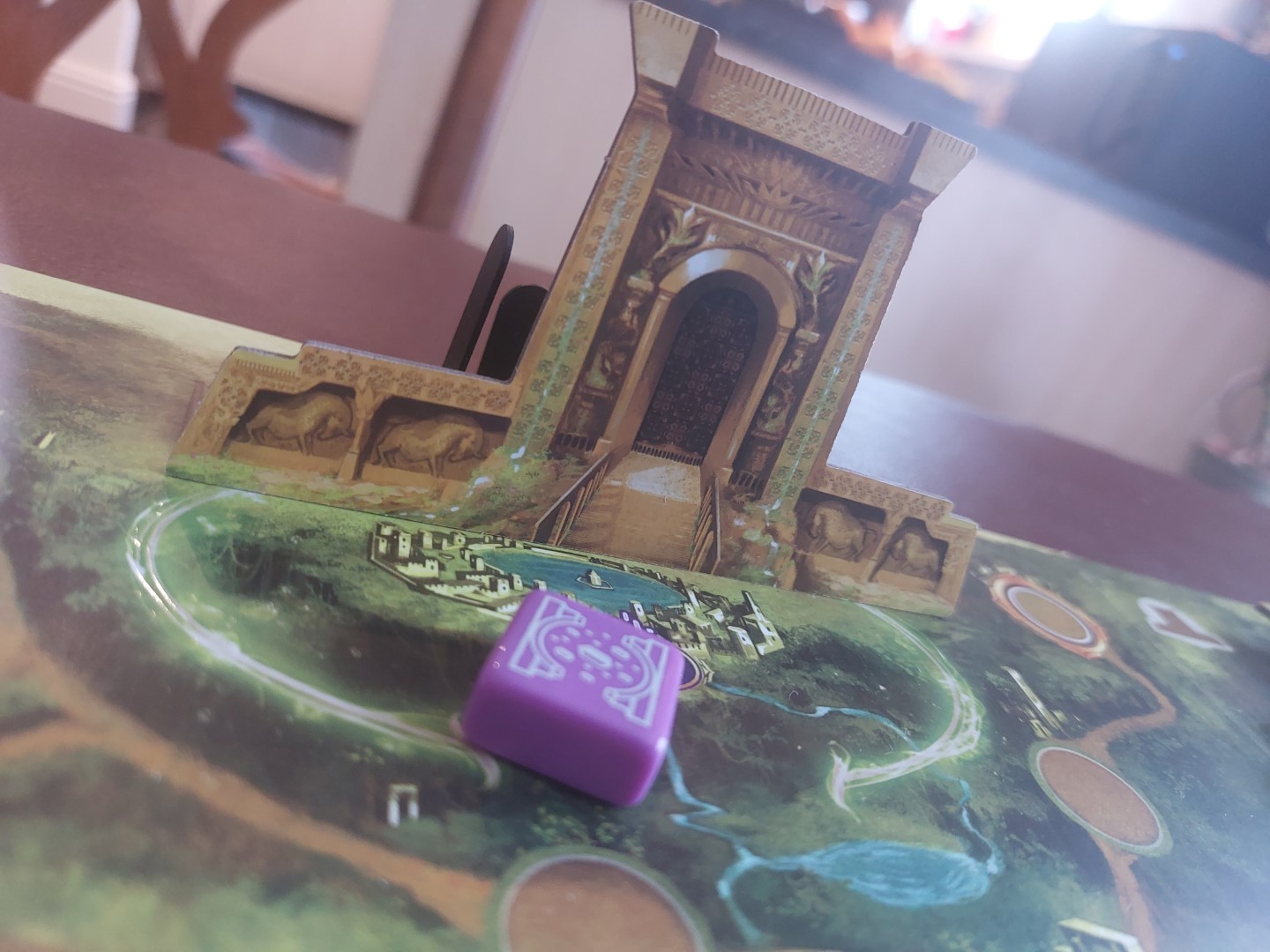
The complexity comes through the games’ insistence on using terms throughout, like binding, placing (which are the same thing really), moving, repositioning combined with iconography that isn’t easily understandable, we found ourselves always referring back to the player aids and rulebook.
Most of the actions take place on the board, where you’ll find monuments, which are just another quality component. Monuments give a sense of needing to be involved even when its not your turn, as if a monument is completed and you contributed, you’ll be rewarded.

But that isn’t the only thing you’ll want to do, as there’s scope here to shape your character with different actions and abilities through upgrades.
In a nutshell, it’s about building monuments, and that is the end game trigger, too. And if you were so inclined, you could probably rush the game’s end. But there’s a whole lot more here, as you’ll be continuously involved as monuments complete throughout the game, giving you bonuses for contributing. Which I think is a nice change to the usual, last to contribute is the only player to get something, here its everyone who contributed gets something.

However, what about the review?
The first thing is the amount of symbology, the icons for different energy, the different actions or even rewards doesn’t feel intuitive to the point where it feels that the theme of the game ties itself in knots and decouples itself from the gaming experience as a result. And I think that’s the biggest missed opportunity, the theme feels like it has so much potential but it feels decoupled at each point from moving your character to collecting energy to the simple action of putting energy on the board it all feels disjointed. For example the weirdest rule that we struggled with from game one was the way your character is facing, we didn’t get the relevance or need in a game that’s all about combo building, it’s not a war game but the orientation of your character feels like an unnecessary rule.

There’s a general sense here that for me, it does at times really feel like I’m just assigning tokens at times, even after 4 plays. Now it’s pretty clear why I want to assign tokens at a certain point in time, e.g., a monument, but other times when it feels like I’m a bit lost in the wilderness of just moving tiles about for victory points (hopefully). And I’m not really sure what my aim or objective is, or who I’m meant to be, it feels almost abstract at times in that there’s such disparity between the actions and the theme that it feels like a tile pusher, which for a game with stunning components, world building (check out the Bellow webpages) something hasn’t worked here. You could just retheme this as a city planner game replacing the monuments with skyscrapers, and I’d probably be just as indifferent to the theme.

That might be its biggest problem, that lack of theme despite its components, rules that feel unnecessary and what feels like an anti Concordia mechanism. In Concordia, on your turn, you take action on your turn until you take a clean-up action, which is a bit faster than a normal action. In an age contrived, you can take a clean up action or take a turn with as many actions as you want, and there’s a significant difference in duration between those two. Now, I talked about wanting to be involved as monuments are being built. However, if I’m taking a clean-up action and the next player then takes 4 actions, and the next player takes, say, 4 actions, without finishing a monument. That’s a whole lot of downtime.

Overall, though, for its time investment of 90 minutes plus, it feels like I haven’t been rewarded for my time and commitment. Now, maybe I need to play this more to get past what feels like a barrier to the fantasy world. I will say, there were turns when I felt like I’d made a super combo that felt rewarding. However, that was only maybe once or twice in a 90-minute experience. If I compare that to over games recently, where there’s been a sense of satisfaction and reward as my board evolves or a strategy allows me to make a big play, an age contrived doesn’t hit these highs often enough.
Take Root, for example, every turn even when I was near elimination. On my turn, the decisions I made felt meaningful and like I could still influence the board state. In an age contrived, there were too many turns that didn’t give me that same sense or reward or decision space that felt like I had the ability to influence the overall board state.
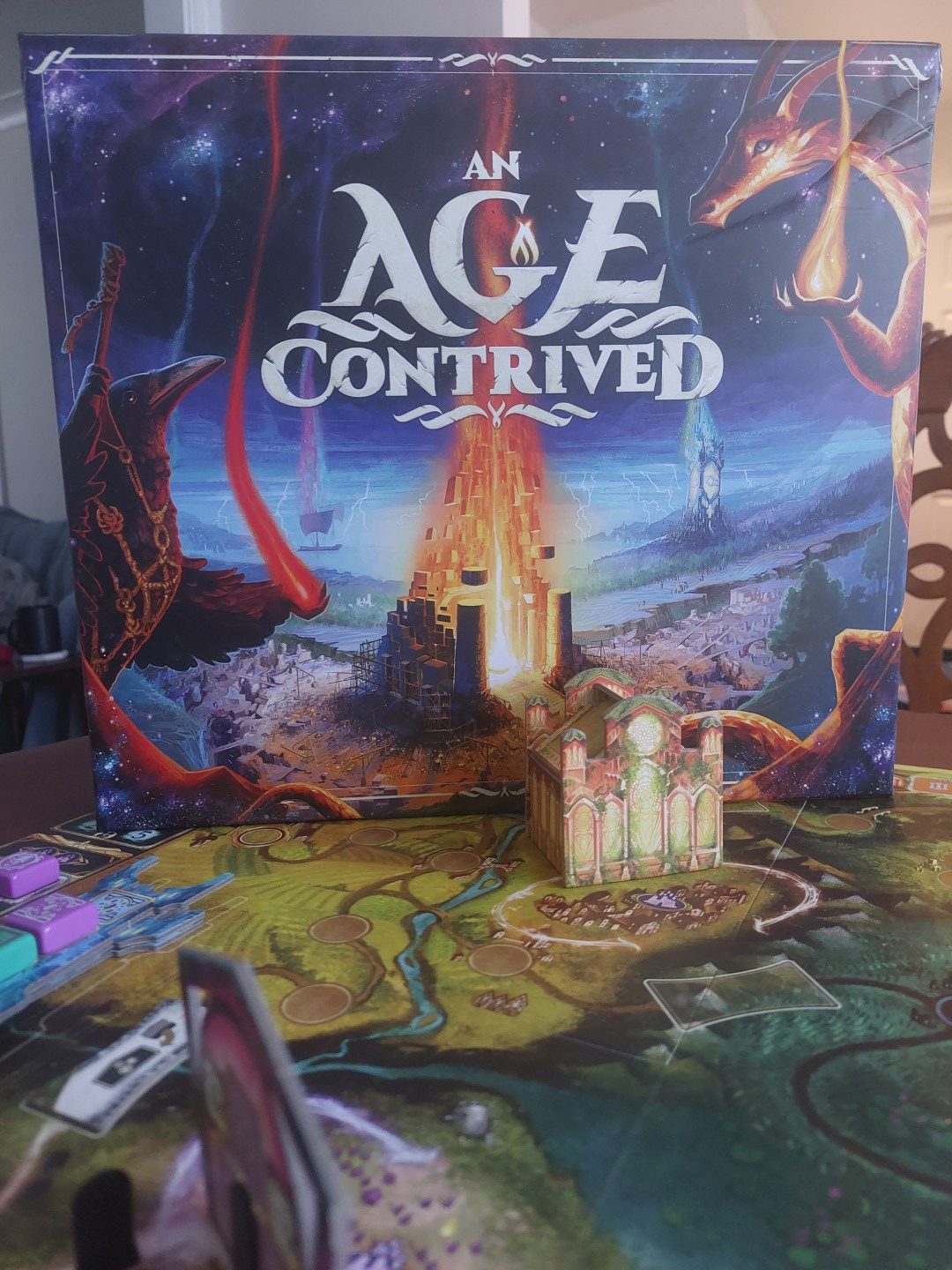
As you know, I rate games on a scale of:
Buy or play
Wait for sale or play if you like game XYZ
Avoid

An Age Contrived isn’t worthy of an avoid, or is it? It’s got its pitfalls, and the components are simply stunning (although I received a damaged copy). I still can’t help but feel that it could be a game here that you might enjoy. However, there are a lot of rough edges.
Now you may read other reviews which suggest that the complexity or rough edges or clutter is worth it, or that the theme shines through, or that the downtime isn’t really that bad, and maybe they’re right. But for me, those rough edges reflect a first-time designer and publisher who needed more time to finish baking a cake, for example simple design decisions like trying to assemble the board each game is a chore and balancing act as one monument will slide out while you try and place another. Or another is the action tokens, in player boards, yes they fit and theoretically you should be able to pop them out when you upgrade them, but we found some needed us to pick up the player boards and punch them out each time.
There are some things here that are genuinely satisfying, e.g., sliding in transmutation tiles and the clunky azul like tiles. The monuments themselves are equally attractive and bring a great table presence, and the entire push and pull between needing energy to spend versus needing energy to score victory points is a careful balance which is probably the most interesting mechanism here, but I’m not sure it’s enough. I also don’t remember the last game that came with a flyer that asked me to head to board game geek and rate the game out of ten. Although that’s not really going to influence my decision into what rating I give a game, it was just a surprise to see it as a separate flyer in the box.
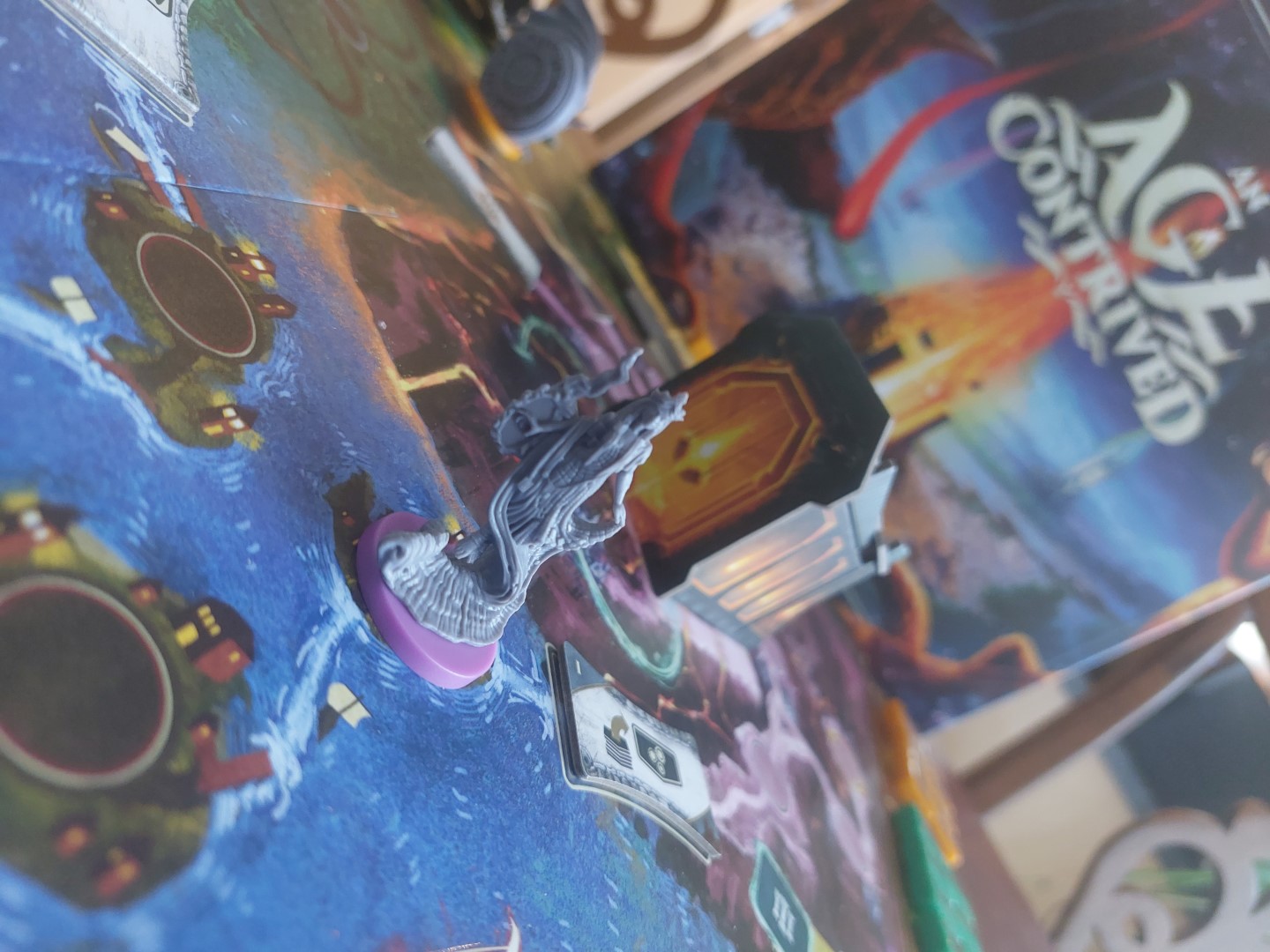
However, if you asked me to play an Age Contrived again, I’d probably ask you what else you had in your bag. And I had signed up to a game in two weeks time, but after my most recent play, I honestly don’t want to play an Age Contrived any time soon, and that’s because there are so many other games I’d rather play. So for me, personally it’s an avoid, but maybe just maybe you might want to pick it up on sale just to try some of the things outlined above.
Comment: I typically play games I review 3 times, which has led to criticisms of not playing a game enough to offer an insight, so I played other games and then reviewed them after 10 or 20 plays and the comments then were why was I playing ‘review’ games that many times before reviewing. So here, I’ve gone for 4 plays, or in hours maybe 7-10 hours or my life, not including the time to write and create the content for this review.
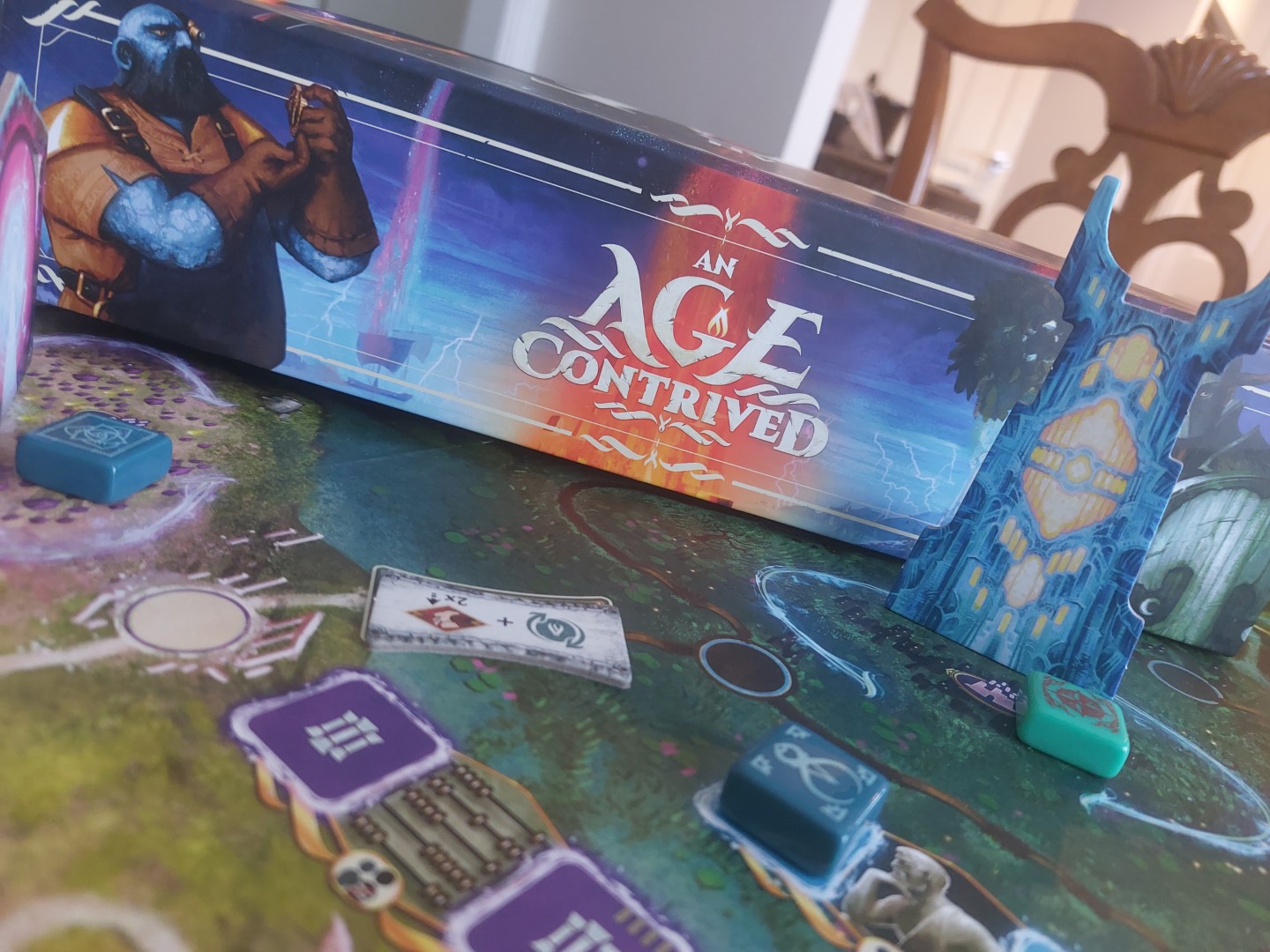
Disclaimer: I was sent a damaged copy of an Age Contrived to review, I didn’t photograph or include the damage in the photos or this review.
